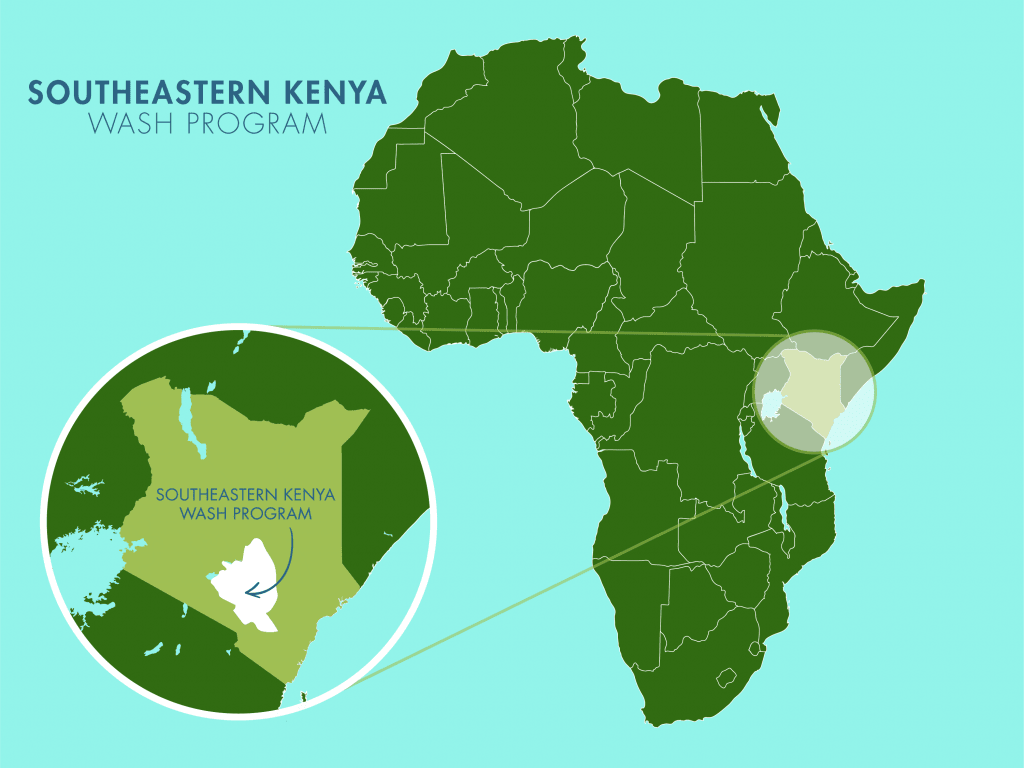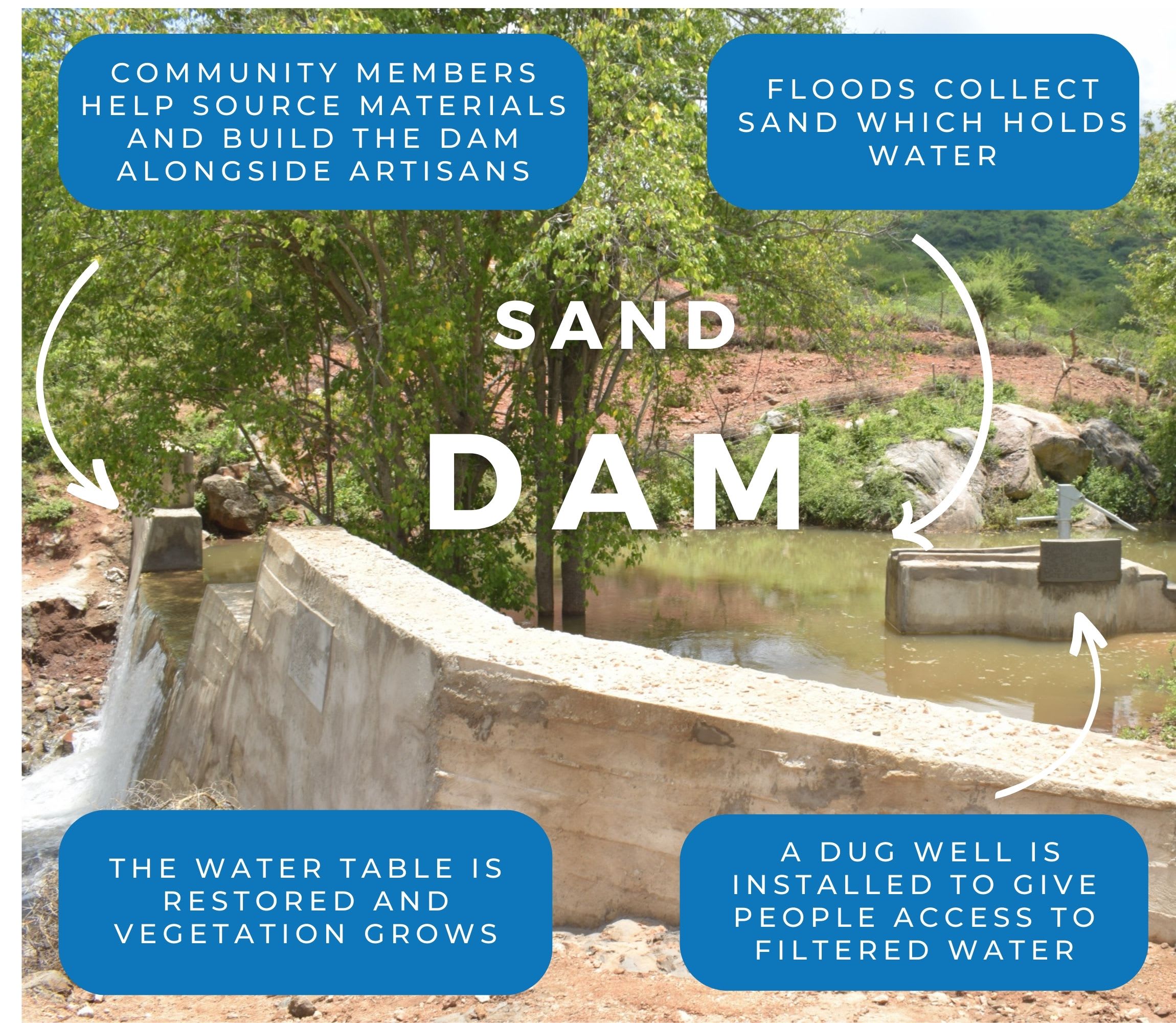Agnes Mawla is one of the 400 residents in the Makulini Community whose everyday life is consumed by the water crisis. The two wells she relies on are an hour's walk away, one way. The sun beats down on her as she lugs her heavy jerrycan back home, knowing this isn't even her last trip for water that day.

Agnes at the local scoop hole, filling her jerrycans with contaminated water.
"Our biggest challenge is that the shallow wells are located far from most homes, and they serve many people. During dry seasons, the water levels drop, and the wells can’t meet everyone’s needs. The terrain also makes it hard to make several trips in a day, so we have to ration water, which affects our hygiene and daily activities," Agnes shared.
When the journey to the well is just too much, Agnes's only other option is to go to the neighboring scoop hole. This is a hole dug into a riverbed, left open to animals and waste, creating a highly contaminated and dangerous water source.

Utilizing the scoop hole.
Agnes worries about the effects on her family and community.
"I’m deeply concerned about safety at our current water sources because they are far from our home and located in a rocky, steep area. The journey is tiring and sometimes dangerous, especially when I’m carrying heavy jerrycans back home. The water from the scoop hole is not always clean—it’s exposed and can easily get contaminated with animal waste or debris. I always worry about my children falling sick after drinking it. We try to treat it at home, but that’s not always possible because of cost and time," Agnes lamented.
Agnes must soldier through her anxieties, as going without water is the only other option and is just as dangerous.
"Water truly is life. It affects every part of our day—what we eat, how clean we stay, our health, and even how well our children perform in school. Without enough water, everything becomes a struggle. With water, we can take care of our homes, plant food, care for our animals, and live with dignity. That’s why I believe water is the foundation for a better future for all of us."
Even amidst the hardships she encounters, Agnes dreams of a future where she doesn't have to travel a two-hour round trip each time she needs to fill her jerrycan. A future where her children don't fall sick, just trying to quench their thirst.
"A new water point would be such a blessing. If it is closer and protected, it would reduce the daily risks we face when walking long distances or climbing rocky hills. We would no longer be exposed to contaminated water that causes illnesses like diarrhea and typhoid, which is common with scoop holes. My children would be healthier and safer, and I wouldn’t have to worry about them missing school due to sickness or exhaustion. It would also mean less physical strain for me, especially as I get older," Agnes noted.

Constructing a sand dam will empower Agnes to seize the future she envisions for herself.
Solving the water crisis in this community will require a multifaceted system that will work together to create a sustainable water source that will serve this community for years to come.
Steps Toward a Solution
Our technical experts worked with the local community to identify the most effective solution to their water crisis. Together, they decided to construct a sand dam and a protected dug well.
Sand Dam
Sand dams are sought-after, climate-smart, and lasting water solutions providing hope and resilience to communities in arid Southeastern Kenya. Think of them like giant sandboxes constructed in seasonal rivers that would typically quickly dry up after the rainy season. Instead of holding water like traditional dams, they collect sand and silt.
When infrequent rains do come, these dams catch a percentage of the river's flow, letting most of the water continue downstream to other communities. But here's the magic: the sand they collect acts like a natural filter, holding onto water long after the river's gone dry. Then, wells are constructed nearby, creating a reliable water source even during the driest times.
And the benefits don't stop there! In communities impacted by climate change, sand dams replenish groundwater and prevent soil erosion. Even during severe droughts, the consistent water supply from these sand dams allows farmers to thrive, giving way for enough food not only for their families but also to sell in local markets.
The most remarkable aspect of sand dams is how they involve the local community every step of the way, giving them a sense of ownership and pride in solving their own water shortage and managing their own water resources.
This sand dam will be connected to a protected dug well to make the water more accessible.
Community Education & Ownership
Hygiene and sanitation training are integral to our water projects. Training is tailored to each community's specific needs and includes key topics such as proper water handling, improved hygiene practices, disease transmission prevention, and care of the new water point. Safe water and improved hygiene habits foster a healthier future for everyone in the community.
Encouraged and supported by our team's guidance, the community elects a water user committee representative of its diverse members. This committee assumes responsibility for maintaining the water point, organizing community efforts, and gathering fees to ensure its upkeep.

 Sand Dam
Sand Dam
 Rehabilitation Project
Rehabilitation Project


















